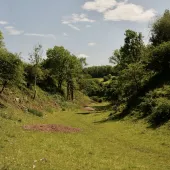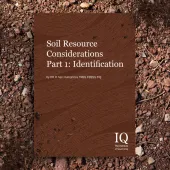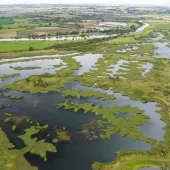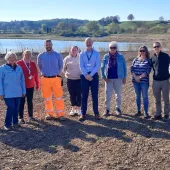Europe's Largest Man-Made Reed Bed
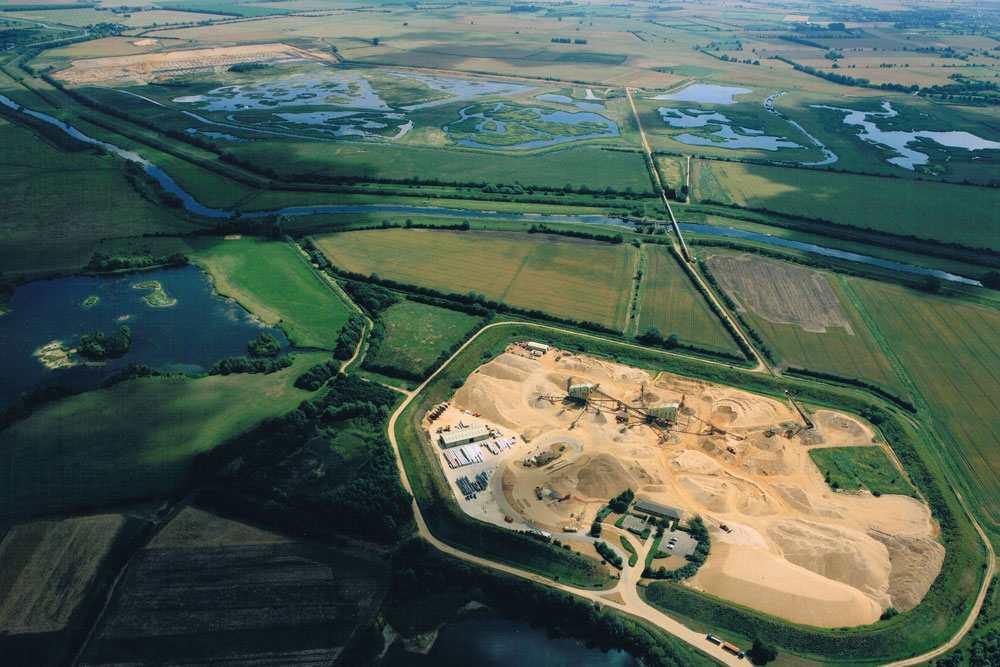
First published in the August 2017 issue of Quarry Management as A Visionary Project
The creation of Europe’s largest man-made reed bed at Hanson UK’s Needingworth Quarry
Quarrying presents an excellent opportunity to enhance and improve the natural environment, and Hanson UK have invested heavily to ensure that their exhausted quarries are restored to the best possible after-use. The company’s vision is to leave behind something as good – or better – than existed before quarrying began, and to have its sites recognized as valuable resources that enhance the local environment.
Some gravel quarries are returned to agriculture, whilst others are left to fill with water for a variety of uses ranging from sailing and fishing to birdwatching and nature conservation. Significantly, many former Hanson sites have become important conservation or educational areas and more than 80 have been designated as Sites of Special Scientific Interest (SSSI). The company has also won several Mineral Products Association (MPA) awards for the quality of its restoration programmes, and last year was named the ‘best of the best’ by UEPG, the European aggregates trade association, for its restoration of the former Middleton Hall Quarry on the Staffordshire/Warwickshire border.
The restoration of quarries is planned before extraction starts, but as well as restoring quarries after they have been used, ongoing restoration during their working life has increasingly become accepted practice. At Needingworth Quarry, in Cambridgeshire, for example, Hanson are creating Europe’s largest man-made reed bed, in partnership with the RSPB.
The quarry, which is adjacent to the river Great Ouse, is one of the largest sand and gravel extraction sites in the UK, covering 975ha and producing up to 1 million tonnes a year. Extraction began in 1995 and will span more than 30 years. The restoration is being phased to create a 460ha reed bed, along with open meres, wet scrub and grassland, within a 700ha nature reserve known as Ouse Fen.
The story of this visionary project began in the late 1980s. With reserves running out at three existing sites in the St Ives area, Hanson, then known as ARC, acquired an interest in Over Fen, a large parcel of gravel-rich land adjacent to the village. Securing planning permission was not easy. It took four years and the final consent contained more than 100 conditions, including the requirement for a substantial financial contribution towards construction of the Needingworth bypass.
By the mid-1990s production had begun, and in 1996 the then Prime Minister John Major formally opened the quarry, describing it as one of the most modern sand and gravel operations in Europe.
Cambridgeshire County Council had initially approved a scheme to return the land to a mixture of agriculture, leisure and conservation. However, as a condition of the planning consent, and as a result of lobbying by various conservation bodies, including English Nature (now Natural England), the RSPB, The Wildlife Trusts, the Countryside Commission and the Environment Agency,
One of the conservation bodies keen to restore the Needingworth site to wetland – and undoubtedly the most enthusiastic – was the RSPB, which worked with Hanson’s in-house experts to design the nature reserve. The proposals included access for the public with 32km of footpaths and educational and interpretation activities.
Together, the partners worked through the feasibility process, which included a comprehensive programme of public consultation to ensure community views were considered. The consultation, which included five public meetings and newsletters to 2,500 homes, resulted in more than 80% of local people supporting the proposal.
The restoration has been planned using a modular system. Each module is around 20ha in size and separated by clay-rich bunds. In July 2007, a significant milestone was reached when the first two modules of restored quarry workings, totalling 44ha, were handed over to the RSPB. Since then Hanson have progressively donated further parcels of land as sand and gravel extraction is completed, which the RSPB will manage and develop for nature conservation.
The creation of new wetlands was identified as a national priority in the 1994 UK Biodiversity Action Plan, endorsed by government. They are needed to secure the future of threatened species and provide new habitat to offset projected future loses of internationally important coastal wetlands through coastal erosion.
Of the 1,500 square miles of wetland that existed in the area 500 years ago, only three-and-a-half remain. The Ouse Fen project will nearly double this and help bring back lost species such as the bittern and the swallowtail and large copper butterflies, which had disappeared as fenland breeding species.
Creating new habitat suitable for important species is a technical challenge. Habitats such as reed beds and seasonally flooded grassland are relatively easy to create and can quite rapidly support key wetland species, such as wildfowl. The creation of peat-based fen is a far greater challenge, as this requires conditions where new peat can form over many centuries. As a result, restoring fens from low-level mineral workings provides the only real opportunity for long-term wetland creation.
The project’s successes have been swift. In 2015 there were 10 booming male bitterns at Ouse Fen – just one fewer than the number recorded in the whole of the UK two decades earlier, and half of the overall 2030 target. Also, the site already has a nationally important number of bearded tits as well as hosting the return of otters and water voles to the area.
David Southgate, Hanson’s principal landscape architect, said: ‘Our partnership with the RSPB at Needingworth demonstrates how quarrying can make a very positive contribution to creating and preserving new habitats through planning restoration and extraction together as an integrated process.
‘I am delighted with what we have achieved so far and how quickly success has come. I hope that what we have learned in creating Ouse Fen can be used to improve restoration at quarries throughout the country.’
- Subscribe to Quarry Management, the monthly journal for the mineral products industry, to read articles before they appear on Agg-Net.com



